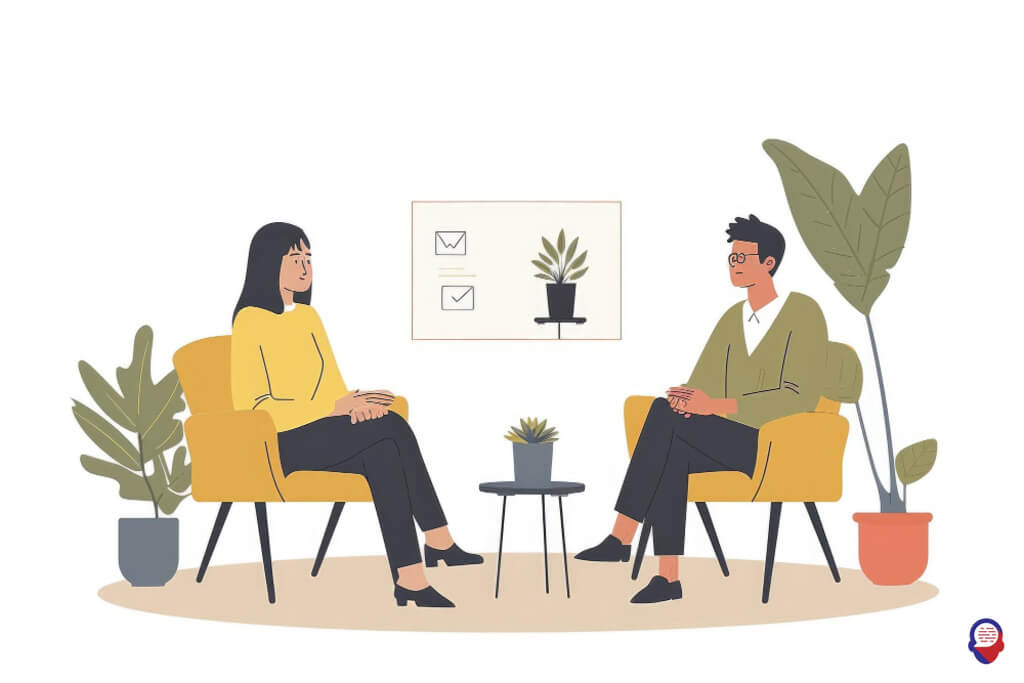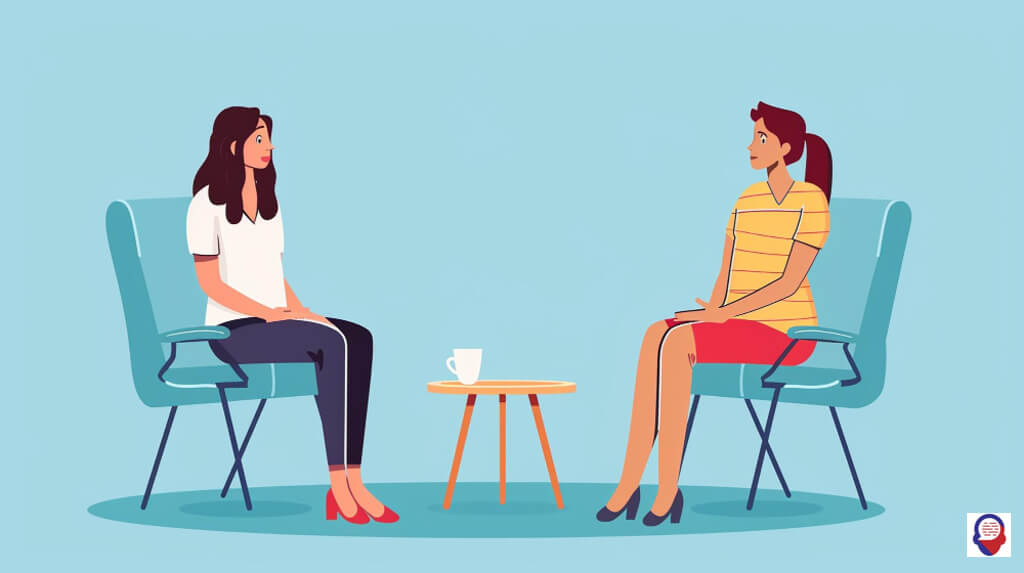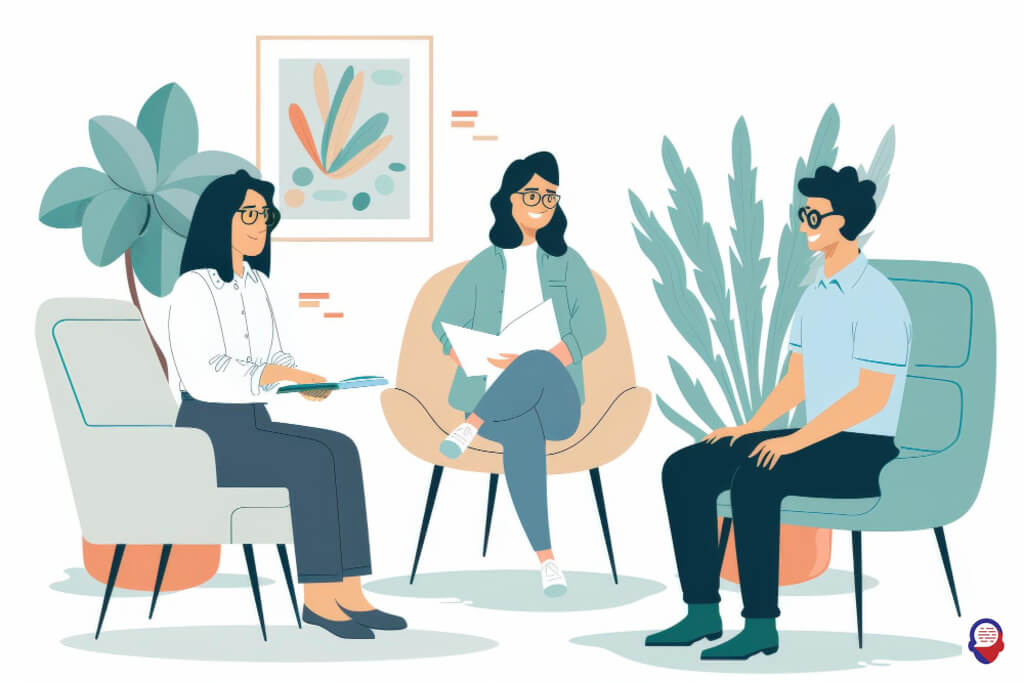Reclaiming Your Life from an Eating Disorder with CBT
An eating disorder can feel like a relentless thief, stealing your joy, your health, and your sense of self. It whispers cruelties, imposes rigid rules, and isolates you in a world of secrecy and shame. But what if there was a structured, evidence-based path to fight back, a way to systematically dismantle the very thoughts and behaviors that keep the disorder alive? For countless individuals, that path is Cognitive Behavioral Therapy.
This approach isn’t about blame or uncovering a single root cause from your distant past. It’s a practical, forward-looking therapy designed to empower you with the tools to understand your eating disorder and, ultimately, to overcome it. It’s about changing the here and now to build a healthier, freer future.

What Exactly is Cognitive Behavioral Therapy for Eating Disorders?
It is a specialized, highly effective form of psychotherapy specifically adapted to address the core mechanisms that maintain all types of eating disorders. Often referred to as Enhanced Cognitive Behavioral Therapy, or CBT-E, it is widely considered the gold standard treatment for adults with conditions like bulimia nervosa, binge eating disorder, and in many cases, anorexia nervosa.
The fundamental idea is that your thoughts, your emotions, and your actions are all intricately connected. CBT-E operates on the principle that by changing the distorted thoughts and unhelpful behaviors related to eating, shape, and weight, you can break the cycle that keeps the disorder going. It’s a collaborative journey between you and your therapist to untangle these connections.
Unlike general CBT, which can be applied to many mental health issues, CBT-E is laser-focused. It directly targets the specific psychological features of eating disorders, such as the intense overvaluation of shape and weight, extreme dietary restraint, and the cycle of bingeing and purging. It provides a clear, structured framework for recovery.

How Does CBT-E Actually Work in Practice?
CBT-E works by guiding you through a series of distinct, sequential stages, each with a specific focus and set of goals. The entire process is a collaborative effort, beginning with a thorough understanding of your unique situation and culminating in a solid plan to prevent relapse and maintain your hard-won freedom.
Think of it as a guided expedition. Your therapist is the expert guide who knows the terrain, but you are the one taking the steps. Together, you create a personalized map, identify the obstacles, develop the skills to navigate them, and chart a course toward a life no longer defined by the eating disorder.

What Happens in the First Stage?
The first stage of therapy is dedicated to building a strong foundation for change by understanding the disorder and stabilizing behaviors. Typically lasting about four weeks, this initial phase involves psychoeducation, self-monitoring, and establishing a regular pattern of eating.
Your therapist will work with you to create a personalized "formulation," which is essentially a visual map showing how your specific thoughts, feelings, and behaviors are interconnected and keeping the eating disorder in place. This is a crucial, eye-opening step that helps demystify the problem, moving it from a place of shame to a problem that can be understood and solved. It’s not about you being flawed, it’s about a system that has taken hold.
A core component of this stage is learning to self-monitor. You will be asked to track your food and drink intake, as well as any associated thoughts, feelings, or events, in real time. This isn’t about counting calories, but about becoming a detective of your own experience. It shines a light on the patterns and triggers you might not even be aware of, providing invaluable data for you and your therapist to work with.
Alongside monitoring, a primary goal is to establish a regular pattern of eating, usually consisting of three meals and two or three planned snacks. This mechanical eating approach helps to reduce the chaos of restriction and bingeing, stabilize blood sugar, and reduce the biological and psychological urges that drive disordered behaviors. It’s about nourishing your body consistently, which in turn calms the mind.

What is the Focus of the Second Stage?
This second stage is a brief, transitional phase dedicated to taking stock of your progress and planning the next, most intensive part of your treatment. It is a moment to pause, review what has been achieved so far, and collaboratively decide on the path forward.
During these one or two sessions, you and your therapist will look back at the information gathered from your self-monitoring and review the changes you’ve made. You’ll identify what’s working well and what challenges remain. This review ensures that the next stage of therapy is perfectly tailored to your individual needs.
Based on this review, you will create a personalized plan for Stage Three. This involves selecting from a menu of therapeutic "modules," each designed to tackle a specific aspect of the eating disorder. This collaborative planning empowers you and ensures the therapy remains focused on the issues most relevant to your recovery.

What Key Issues Are Addressed in the Third Stage?
The third stage is the heart of the therapy, where you and your therapist actively work to change the core mechanisms maintaining the eating disorder. Using the personalized plan created in Stage Two, you will systematically address the key psychological features of your condition.
This is where the deep work happens. It’s a phase of challenging long-held beliefs, facing fears head-on, and developing new, more flexible ways of thinking and behaving. Each session will build on the last, equipping you with a robust toolkit of skills to manage difficult thoughts and situations.

How Does CBT-E Address Overvaluation of Shape and Weight?
It directly confronts the central belief that your self-worth is defined by your body shape and weight. The therapy helps you recognize that this overvaluation is the core problem, the engine driving the entire disorder, not a simple matter of vanity.
Your therapist will guide you through cognitive restructuring techniques to challenge this belief. You’ll learn to identify the automatic thoughts that link your weight to your value as a person and to examine the evidence for and against them. The goal is to develop a broader, more stable sense of self-worth based on qualities, relationships, and achievements that have nothing to do with a number on a scale.
This involves cultivating other areas of your life that have been neglected because of the eating disorder. By investing time and energy into hobbies, friendships, career goals, or personal values, you begin to build a life so rich and meaningful that shape and weight naturally become less important. It’s not about forcing yourself not to care, it’s about building a life where you have so much more to care about.

How Are Dietary Rules and Food Avoidance Tackled?
CBT-E systematically dismantles the complex web of rigid dietary rules and food fears that dictate what, when, and how you eat. These rules, which often feel like they provide safety and control, are actually a primary driver of binge eating and malnutrition.
The process begins by identifying your specific rules, such as "no carbs after 6 pm" or "I can only eat ‘safe’ foods." You and your therapist will then design "behavioral experiments" to test these beliefs. For example, you might collaboratively plan to eat a feared food in a controlled way to see if the catastrophic outcome you predict actually happens.
This gradual, supported exposure helps to neutralize fear and prove that the rules are unnecessary and harmful. By reintroducing feared and forbidden foods into your diet, you break down the black-and-white thinking of "good" versus "bad" foods. You learn to eat flexibly and intuitively, reclaiming food as a source of nourishment and pleasure rather than fear and anxiety.

What Strategies Help with Body Checking and Avoidance?
The therapy directly targets behaviors like compulsive weighing, scrutinizing your reflection, or pinching parts of your body, which all reinforce body dissatisfaction. It also addresses body avoidance, such as refusing to look in mirrors or wearing baggy clothes to hide your shape, which prevents you from developing a realistic and accepting view of your body.
One powerful technique is called "mirror exposure." In a structured and supportive manner, your therapist will guide you to look at your reflection with a focus on objective description rather than harsh judgment. The aim is to reduce the distress associated with seeing your body and to help you view it as a whole, rather than focusing on perceived flaws.
For body checking, you will work on "response prevention," which involves making a conscious decision to reduce and eventually stop the checking rituals. You might agree to weigh yourself only once a week at the therapist’s office or to limit mirror-gazing to a few minutes a day. This breaks the compulsive cycle and reduces the power these behaviors have over your mood and self-esteem.

How Does CBT-E Manage Triggers for Bingeing or Purging?
It helps you understand the specific function that bingeing or purging serves in your life and equips you with alternative, healthier coping strategies. These behaviors are rarely about food itself, they are often a way to manage difficult emotions, stress, or boredom.
Using a technique called "functional analysis," you will examine the specific chain of events, thoughts, and feelings that lead up to a binge or purge. By understanding the triggers and the perceived "payoff" of the behavior, you can identify the critical points where you can intervene.
Your therapist will then help you develop a personalized toolkit of alternative coping skills. This might include problem-solving difficult situations, developing emotional regulation techniques like mindfulness or deep breathing, or planning activities to fill times when you are most vulnerable. The goal is to have a plan in place so that when an urge strikes, you have a constructive way to respond instead of turning to the eating disorder.

Who Can Benefit From This Type of Therapy?
CBT-E is designed to be a ‘transdiagnostic’ treatment, meaning it is effective for the full range of eating disorders in adults and many adolescents. It can be successfully applied to bulimia nervosa, binge eating disorder, anorexia nervosa, and other specified feeding or eating disorders (OSFED).
The therapy is highly adaptable. While the core principles remain the same, the specific focus and modules used are tailored to the individual’s diagnosis and unique challenges. For example, someone with anorexia nervosa will have a greater focus on weight restoration and the psychological effects of starvation, while someone with binge eating disorder will focus more intensely on managing binge triggers.
CBT-E is most effective for individuals who are motivated, even if ambivalently, to engage in the process of change. Because it is an active therapy that requires work between sessions, a willingness to try new behaviors and complete self-monitoring tasks is crucial for success. It is a powerful choice for anyone ready to take a structured, skills-based approach to recovery.

What Makes CBT-E Different From Other Therapies?
CBT-E stands apart from other therapeutic approaches primarily due to its present-focused, structured, and skills-based nature. It is less concerned with why the eating disorder started and more focused on what is keeping it going right now.
Unlike psychodynamic therapies, which may delve deeply into childhood experiences and unconscious conflicts to find the root cause of the disorder, CBT-E concentrates on the "here and now." The core belief is that even if past events contributed to the start of the problem, the disorder is now maintained by a self-perpetuating cycle of thoughts and behaviors that can be changed in the present.
Compared to Family-Based Treatment (FBT), which is the leading treatment for adolescents and involves parents taking an active role in re-feeding, CBT-E is an individual therapy. It empowers the person directly to become their own agent of change. While it values the support of family, the work of therapy is done primarily between the therapist and the individual.
The highly structured format is also a key differentiator. With its clear stages, specific modules, and regular review points, CBT-E provides a clear and predictable roadmap for recovery. This can feel incredibly containing and hopeful for someone whose life has been ruled by the chaos of an eating disorder.

What Are the Realistic Expectations for Recovery with CBT-E?
A standard course of CBT-E for individuals who are not significantly underweight typically involves around 20 sessions over 20 weeks. For those who are underweight and need to regain weight as part of their recovery, the treatment is longer, usually involving around 40 sessions over 40 weeks.
It is crucial to understand that recovery is not a straight line, it is a process with ups and downs. There will be good weeks and challenging weeks. Setbacks are a normal and expected part of the journey, not a sign of failure. The therapy is designed to help you learn from these moments and build resilience.
The success of CBT-E is heavily dependent on your commitment to the process. The work you do outside of the therapy room, such as practicing self-monitoring, completing behavioral experiments, and using your new coping skills, is just as important as the session itself. It is an active, collaborative treatment where you are the driver of your own recovery.

What Happens in the Final Stage of Treatment?
The final stage of therapy is focused on ensuring your recovery is sustainable long-term by developing a comprehensive relapse prevention plan. This phase, known as "Ending Well," solidifies the progress you have made and prepares you for life after therapy.
You and your therapist will look ahead to identify potential future high-risk situations that could trigger a lapse. Together, you will brainstorm and document a clear plan for how to handle these challenges if they arise. This involves reminding yourself of the key skills and insights you have gained throughout the treatment.
The goal is to help you become your own therapist. You will leave treatment with a personalized "blueprint" for maintaining your recovery, which includes strategies for managing setbacks and a clear understanding of when you might need to seek additional support. This final stage ensures you feel confident and equipped to continue your journey of freedom from the eating disorder.
Frequently Asked Questions

Do I have to be a certain weight to start CBT-E?
No, you do not have to be at a specific weight to begin CBT-E. The therapy is adaptable for individuals across the weight spectrum. However, if you are severely underweight, the initial focus of therapy, often in collaboration with a medical doctor and dietitian, will be on medical stabilization and gradual weight restoration, as a starved brain cannot engage effectively in the cognitive aspects of therapy.

Will I have to talk about my childhood?
CBT-E is primarily focused on the present and future, not the past. While your therapist will take a history to understand your background, the sessions will not be spent delving into your childhood. The focus is on understanding and changing the factors that are keeping the eating disorder active in your life today.

Is CBT-E done one-on-one or in a group?
CBT-E is predominantly delivered as an individual, one-on-one therapy. This allows the treatment to be completely personalized to your specific needs, formulation, and pace of recovery. While group therapy can be a helpful adjunct for support, the core CBT-E protocol is designed for an individual setting.

What if I’m not sure I want to recover?
Ambivalence about recovery is extremely common and is an expected part of the process. Your therapist will understand this. The initial stages of CBT-E are designed to help you explore the pros and cons of changing, and many people find that as they begin to make small changes and feel better, their motivation to continue grows stronger. You don’t have to be 100% certain to start, you just need to be willing to try.
Taking the first step toward recovery is often the hardest, yet most courageous, decision you can make. It’s an acknowledgment that you deserve a life free from the constraints of an eating disorder, a life filled with connection, purpose, and peace. You do not have to walk this path alone.
At Counselling-uk, we provide a safe, confidential, and professional place to find the support you need for all of life’s challenges. Our dedicated therapists are here to guide you through evidence-based treatments like CBT-E with compassion and expertise. Reach out today to begin your journey toward reclaiming your life. You are worth it.



